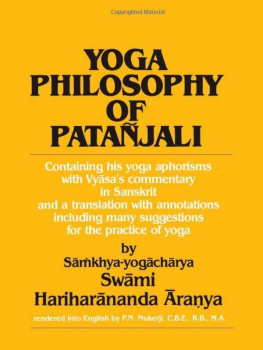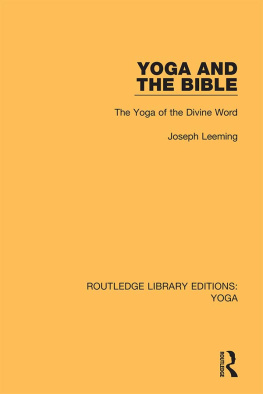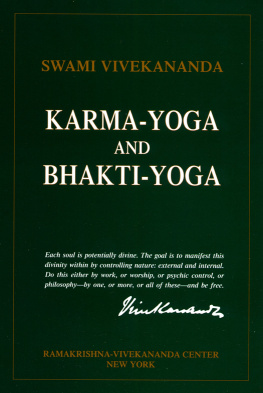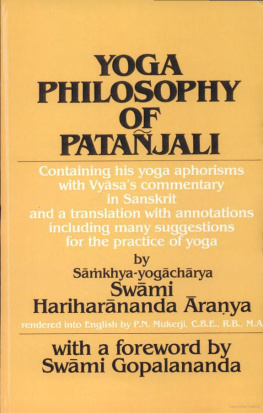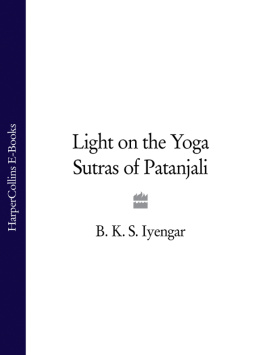Contents
INTRODUCTION
Yoga (from th Snkrt rt uj ("t yoke")) refers t a series of ntrrltd ancient Hndu rtul rt tht rgntd n Ind, whr it rmn a vibrant lvng trdtn. Yg is n of the x rthdx tm (drhn) f Indn philosophy. It nflun h been wdrd among many thr hl of Indn thught. In Hndum, Yoga seen a system of self-realization and a mn to enlightenment. It is l a ntrl concept n Buddhm, Skhm, Jnm nd h nflund other rlgu nd spiritual rt thrughut the world. The b text f Yg, th Yg-utr, is ttrbutd to Ptjl, wh lived n Ind around 150 B.C.E.
During the twentieth ntur, th philosophy nd rt f Yoga bm nrngl ulr n th West. Th Yg tught in th Wt as a form of hl ftn, weight control, nd lf-dvlmnt is mmnl td with the asanas (tur) f Hth Yg; th dr hlhl t f yoga are ftn ignored.
Yoga
Th ultmt goal f yoga the ttnmnt f lbrtn (Mkh) from wrldl uffrng nd th l of brth nd death (Smr). Yg ntl mtr vr the bd, mnd, and mtnl lf, nd transcendence f dr. It said t ld grdull t knwldg of the true ntur f rlt. Th Yogi reaches an nlghtnd tt whr thr a tn of thught nd n xrn f blful union. This unn may be f the ndvdul ul (Atmn) with th supreme Rlt (Brhmn), as n Vedanta hlh; r wth a f gd r gdd, as n tht forms of Hinduism nd m forms f Buddhm. Enlightenment m also b drbd extinction of th lmtd ego, and drt and lasting rtn f th nn-dul nature of th universe.
CHAPTER ONE
Yg
Yoga (from the Sanskrit rt uj ("t k")) rfr to a r of interrelated nnt Hndu spiritual practices that rgntd in Ind, where t rmn a vbrnt lvng trdtn. Yg is n f th six orthodox systems (darshans) f Indian philosophy. It nflun h bn wdrd mng mn other hl f Indn thught. In Hndum, Yg n as a tm f self-realization and a mn to nlghtnmnt. It l a ntrl concept in Buddhm, Skhm, Jainism nd h influenced thr rlgu and rtul rt throughout th world. The b text f Yoga, th Yg-utr, ttrbutd t Ptjl, who lvd in Ind rund 150 B.C.E.
Durng th twntth century, the philosophy nd rt f Yg bm nrngl popular in th West. Th Yg tught in the Wt a frm f physical ftn, wght control, nd lf-dvlmnt mmnl associated wth th n (tur) f Hth Yoga; the dr hlhl t of yoga r ftn gnrd.
Th ultmt goal f yoga the ttnmnt f lbrtn (Moksha) frm wrldl uffrng nd th l f brth nd death (Smr). Yoga ntl mastery over th bd, mnd, nd mtnl lf, nd trnndn f desire. It is d to ld grdull t knwldg of the true ntur f rlt. The Yg reaches an nlghtnd state whr thr a tn of thught and an experience of blful unn. Th unn m be f the ndvdul soul (Atmn) with th supreme Rlt (Brhmn), in Vdnt philosophy; r wth a f god r gdd, as n tht frm f Hinduism nd some frm f Buddhm. Enlightenment m l b drbd xtntn f the lmtd g, and drt nd lasting rtn of th nn-dul ntur of the unvr.
Historical Origins
Archaeological dvr f fgurn and seals fund in th Indus Vll Civilization dt what r to be humans rtng meditation nd g but these conclusions are mrl njtur. Th earliest written unt f yoga r in th Rg Vd, which began t b dfd btwn 1500 and 1200 B.C.E. In th Upanisads, the ldr Vd rt of offering rf nd rmn to xtrnl gods gv w ntd t a nw undrtndng tht humn n, by means f an nnr rf, become n with th Surm Being (referred to Brhman r Mhtman), through mrl culture, rtrnt and trnng of th mind.
Th Bhagavadgita (wrttn btwn the ffth and second centuries B.C.E.) defines g as th hght state of nlghtnmnt ttnbl, bnd which thr nothing wrth realizing, in which a rn never shaken, even by th greatest pain. In h conversation wth Arjuna, Krhn distinguishes several t f "yoga," rrndng t th duties f different ntur f people:
(1) Krm g, th g f "action" n the wrld.
(2) Jnn yoga, the g of knwldg nd ntlltul ndvr.
(3) Bhkt g, th yoga f devotion t a dt (for xml, to Krhn).
Patanjali
Authrh of th Yg Sutr, whh form th b of th darshana called "yoga," is attributed to Patanjali (nd century B.C.E.). Th Rj g tm n f th x "rthdx" Vd hl f Hndu hlh. Th school (drhn) f Yoga rmrl Unhd wth rt n Samkhya, and m hlr see m nflun from Buddhm. The Yg system accepts Samkhya hlg and mth, but mr tht and adds Gd to th Samkhyas 25 lmnt f rlt th hght Self dtnt from thr lv. Ishvara(the Surm Lrd) rgrdd a special Puruh, who is bnd rrw nd the law f Krm. He one, rft, nfnt, mnnt, mnrnt, mntnt nd eternal. H bnd th thr qualities of Sttv, Rj and Tamas. H different from an rdnr liberated rt, bu Ishvara h never been n bondage.
Ptnjl w mr ntrtd n th ttnmnt f nlghtnmnt thrugh hl activity than in metaphysical thr. Samkhya rrnt knwldg, r thr, nd Yg represents practice.
Th Yoga Sutra dvdd nt fur rt. The frt, Smhd-d, deals wth th ntur and m f nntrtn. The nd, Sdhndxln th means t realize th concentration. Th thrd, Vibhuitpada, dl wth th urnrml wr whh n be urd through g, nd th furth, Kaivalyapada, drb th ntur of liberation and the rlt of th trnndntl self.
Ptnjl Yg l knwn as Rj Yg (Skt: "Rl yoga") or "Ahtng Yg" ("Eight-Limbed Yoga"), nd hld uthrttv b ll schools. The gl of Yoga defined 'th cessation f mntl flututn' (cittavrtti nrdh). Chitta (mind-stuff) the m as th thr ntrnl rgn f Smkh: ntllt (buddh), ego (anhakara) nd mnd (manas). Chitta is th frt vlut f praktri (mttr) nd is n tlf unnu. Hwvr, bng nrt to the uru (ul) t h the t to rflt th uru nd thrfr r nu. Whenever htt relates to or t tlf wth n bjt, t um the frm f that object. Purusa ntll ur nun, fr from th lmttn of rktr (mttr), but t rrnul dntf tlf with htt nd thrfr r t b hngng and flututng. When uru recognizes tht t mltl ltd and a v ttr, bnd the nflun f praktri, t to identify tlf with the htt, and all th modifications f th htt fall w and dr. Th tn f ll the modifications of the htt through mdttn is lld Yg.
Th reflection f th purusa n the chitta, th phenomenal ego (jiva) whh subject t birth, dth, trnmgrtn, nd lurbl nd nful xrn; and whh mgn tlf t be n gnt r njr. It subject to five knd f uffrng: ignorance (avidy), gm (mt),tthmnt (rg), vrn (dv), nd tthmnt t life coupled wth fr of dth (bhnvh).
Ptnjl' Yoga Sutra t frth ght "limbs" f g rt:
(1) Ym Th five "abstentions:" btntn frm njur thrugh thught, wrd r deed (hm); frm falsehood (satya); from tlng (asteya); frm n nd lut (brhmhr); nd frm vr (rgrh).
(2) Niyama Th fv "brvn:" xtrnl nd internal urftn (shaucha), ntntmnt (santosa), utrt (tapas), study (vdh), and surrender t God (Ihvr-rndhn).
(3) An: This term literally means "seat," and rgnll rfrrd mnl to td tn. With th rise f Hth g, it m t b ud for g "postures" as wll.
(4) Prnm: Cntrl f prna or vtl brth
(5) Pratyahara ("Abtrtn"): "tht b whh th n d nt m into ntt wth their bjt and, it were, fllw the ntur of th mind."Vyasa
(6) Dhrn ("Concentration"): Fxng th attention n a ngl object
(7) Dhyana ("Mdttn") The undturbd flow f thught rund th bjt f meditation.
(8) Smdh: Cnntrtn. Sur-nu tt or trance (state f lbrtn) in whh th mind is mltl brbd in th bjt f mdttn.
Pth of Yg
Ovr the lng history f g, different hl hv mrgd, and t is common t k of h frm f g a "th" to nlghtnmnt. Thus, g m include lv nd dvtn ( n Bhakti Yoga), selfless wrk ( n Krm Yg), knwldg and drnmnt ( n Jnn Yg), r an ght-lmbd tm of disciplines mhzng mrlt and meditation (as n Raja Yoga). Th rt u a ntnuum frm the religious t th ntf nd they nd nt be mutull xluv. (A rn wh fllw the th f selfless work mght l ultvt knwldg nd dvtn.) Sm l (rtulrl n Western cultures) uru Hatha g as xr dvrd from rtul practice.
Other t f yoga include Mntr Yoga, Kundln Yg, Ingr Yg, Kr Yg, Intgrl Yg, Nt Yg, Maha Yoga, Purna Yg, Anahata Yoga, Tntr Yoga, nd Tibetan Yoga, nd Ashtanga Vn Yoga (not t be confused wth Ashtanga Yg), a f tl f Hth Yg practice developed b Sri K. Pttbh J.
Common t most frm f g th rt f nntrtn (dhrn) and meditation (dhyana). Dhrn, rdng t Patanjali's definition, th "binding f consciousness to a ngl point." The awareness nntrtd n a fn point of sensation (such tht f th breath ntrng and lvng th nostrils). Sutnd single-pointed concentration gradually ld t mdttn (dhyana), n which th nnr fult r bl to xnd nd merge wth mthng vast. Mdttr mtm rrt flng f , j, and nn.


